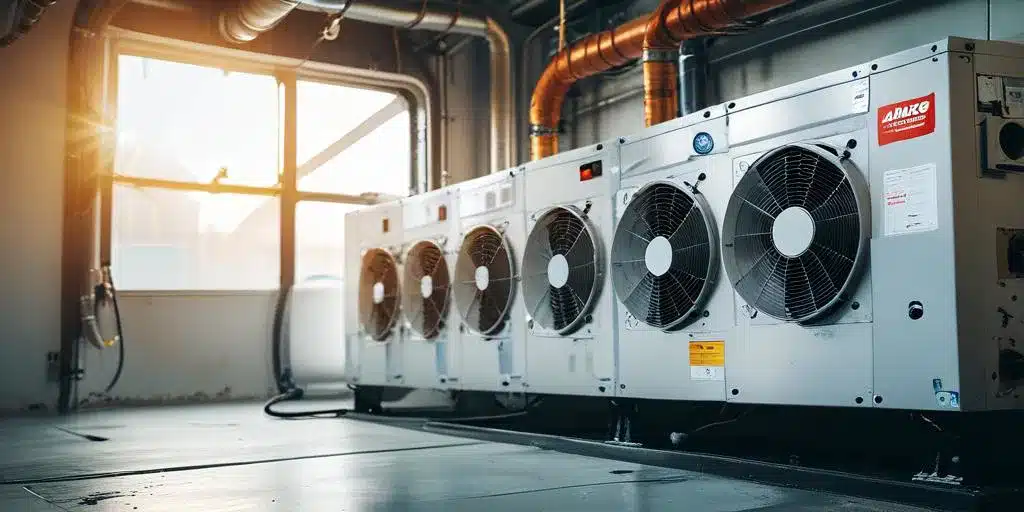Table of Contents
The Internet of Things (IoT) is transforming the HVAC industry by enabling smarter, more efficient systems that respond in real time to environmental changes and user needs. IoT-connected devices allow for enhanced monitoring, predictive maintenance, and energy management, leading to cost savings and improved comfort.
In 2025, the HVAC industry will rely heavily on IoT technology to optimize system performance, reduce energy consumption, and provide more personalized climate control solutions. This shift is changing how businesses and homeowners interact with heating, ventilation, and air conditioning systems.
Overview of IoT in the HVAC Industry
The integration of networked devices with HVAC systems enables real-time data collection and automated control. This advancement improves energy efficiency, system diagnostics, and user comfort. Key technologies and trends are transforming traditional HVAC setups.
What Is the Internet of Things (IoT)?
The Internet of Things (IoT) refers to a network of physical devices embedded with sensors, software, and connectivity. These devices communicate and exchange data over the internet without human intervention. In HVAC, this means equipment like thermostats, air handlers, and sensors are interconnected.
IoT allows continuous monitoring and precise adjustment of HVAC parameters. For example, smart thermostats in residential and commercial buildings adapt to occupancy patterns, reducing energy waste. The data generated helps companies analyze system performance and predict maintenance needs, minimizing downtime.
Current State of HVAC Technology
Conventional HVAC technology relies on manual controls and scheduled maintenance. Most systems operate without real-time feedback, limiting optimization. However, many HVAC providers, including the Murfreesboro HVAC Company, now offer smart systems that incorporate basic IoT features.
These systems often include remote monitoring and simple automation, such as adjusting temperature based on time of day. Despite progress, widespread adoption of fully integrated IoT solutions remains gradual due to cost and infrastructure challenges. Issues like interoperability between devices and cybersecurity remain key concerns for installations.
Growing Role of IoT in HVAC
IoT adoption in HVAC is accelerating, driven by demand for energy savings and predictive maintenance. Advanced sensors track variables such as humidity, air quality, and equipment health continuously. This data enables automated responses, improving system efficiency and lifespan.
Companies like Murfreesboro HVAC Company are leveraging IoT to offer customized service plans using real-time system diagnostics. Future HVAC systems will increasingly use machine learning to optimize operations based on environmental conditions and user behavior patterns.
Benefits of IoT-Enabled HVAC Systems
IoT integration in HVAC systems enhances efficiency, cost control, and system reliability. It also improves user comfort and indoor air quality through precise data-driven adjustments.
Energy Efficiency and Cost Savings
IoT sensors collect real-time data on temperature, humidity, and occupancy, enabling HVAC units to operate only when necessary. This targeted operation reduces energy waste significantly. For example, systems can power down in unoccupied rooms or adjust based on weather forecasts.
Smart thermostats and automated controls optimize energy use, often resulting in energy savings of up to 30%. This translates directly into lower utility bills for businesses and homeowners.
Maintenance automation through IoT reduces unexpected breakdowns, which can be costly. Preventative energy management also extends the lifespan of HVAC components by avoiding excessive wear.
Remote Monitoring and Predictive Maintenance
IoT devices provide continuous remote access to HVAC system performance and health data. Facility managers can monitor the system via dashboards and receive alerts about anomalies instantly.
Predictive maintenance uses historical data and machine learning to forecast failures before they occur. Instead of waiting for system breakdowns, technicians can schedule repairs proactively.
This approach decreases downtime and repair costs. It also reduces emergency service calls, which tend to be expensive and disruptive.
Continuous system monitoring ensures equipment operates within optimal parameters, further preventing energy losses and costly damage.
Improved Comfort and Air Quality
IoT-enabled HVAC systems adjust temperatures more precisely by analyzing occupancy patterns and outside weather conditions. This real-time adjustment helps maintain consistent indoor comfort.
Sensors track air quality metrics such as CO2 levels, humidity, and particulate matter. The system can increase ventilation or activate filters as needed.
Improved air quality reduces health risks and enhances productivity for occupants. Personalized settings can also be implemented for different zones within a building, catering to individual preferences.
By ensuring both comfort and air quality, IoT HVAC systems contribute to a healthier and more pleasant indoor environment.
Transforming HVAC Services Through IoT Integration
IoT is enabling HVAC systems to operate with higher efficiency and precision. It brings smarter controls, predictive maintenance, and quicker problem resolution. These improvements are transforming how service providers in places like Murfreesboro, TN approach HVAC care.
Smart Sensors and Automation
Smart sensors continuously monitor temperature, humidity, airflow, and energy usage in real time. They detect anomalies such as filter blockages or unusual pressure drops before these issues worsen.
Automation adjusts settings dynamically based on sensor data to maintain optimal climate control and energy efficiency. For example, HVAC units can lower output during low usage periods without human intervention.
For AC service Murfreesboro TN, smart sensors reduce manual inspections and enable systems to self-regulate. This increases system longevity and lowers energy costs while ensuring comfort.
Data-Driven Maintenance and Service Delivery
IoT devices collect and transmit performance data to centralized platforms. Technicians analyze this data to predict failures and schedule maintenance only when needed.
This data-driven approach prevents costly emergency repairs by addressing small problems early. It enhances service quality and resource allocation for HVAC services in Murfreesboro, TN.
Service providers can prioritize calls, order parts in advance, and confirm warranty status using real-time data. This reduces downtime and streamlines customer interactions.
Remote Diagnostics for Faster Repairs
Remote diagnostics give technicians instant access to HVAC system status without onsite visits. They can identify issues such as sensor failures or refrigerant leaks using connected devices.
This capability speeds up troubleshooting and guides customers through simple fixes when possible. If a field visit is necessary, technicians arrive prepared with the right tools and parts.
For AC service providers in Murfreesboro, TN, remote diagnostics cut response times and service costs. Customers experience faster resolutions and less disruption to their daily routines.


